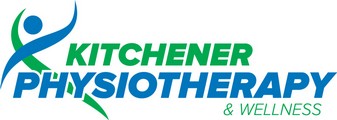Back pain in children that doesn't go away is a red flag symptom. Although rare, serious causes of back pain such as tumors, infection, and disc herniations must be considered. In this article, pediatric orthopedic surgeons review back pain in children from disc herniations.
Risk factors, pathophysiology, and clinical presentation (signs and symptoms) are discussed. Evaluation including physical exam and imaging studies guide the physician in making the diagnosis and determining the plan of care.
Most of the time, conservative (nonsurgical) care is the primary focus of treatment. This approach begins with antiinflammatory medications and physiotherapy. If the painful back and/or leg symptoms don't resolve, then a steroid injection may be considered. In a small number of cases, surgery is required.
But let's back track a bit and take a closer look at each of the details presented in the sections mentioned. First, all the patients in the literature analyzed were 19 years old or younger. Girls younger than 16 years old were more likely than boys of any age to develop disc herniations. This may have to do with sudden growth spurts in girls that occur earlier than in boys.
Risk factors include heavy lifting, previous back injuries, and repetitive motions. Falls associated with athletic and sports activities are additional risk factors. For other patients, sudden increases in training, poor conditioning, or decreased spine range-of-motion increase the risk of disc herniation. It's possible that congenital defects (present at birth) contribute to disc herniations but this hasn't been proven directly.
Motions that put stress on the disc and increase pressure within the disc itself are more likely to lead to injury of the disc. For example, repeated flexion (bending) of the lumbar spine (low back), compression down through the spine, and spinal rotation or twisting can tear the outer covering of the disc. This area is called the annulus fibrosis. The gel-like substance of the center can then push out of the disc space (a disc protrusion) and even break through the outer covering (a disc herniation).
How can the physician tell if the child has a disc (or other serious) problem? Leg pain and numbness down the leg (without back pain) is actually the most common symptom reported by children who have disc herniations. Stiffness and loss of motion are common. A history of trauma or injury associated with sports is an important clue.
Movements that aggravate the pain and the location of that pain provide clues to the differential diagnosis. The physician's exam takes into consideration the child's posture and the presence of reactive scoliosis or a lateral shift. A reactive scoliosis or lateral shift occurs as the spine and trunk instinctively move away from the protruding disc. This shift takes pressure off the spinal nerve and may decrease symptoms for the patient.
The examiner relies on other clinical tests (e.g., straight leg raise, pinprick, and muscle testing) to determine when imaging studies (e.g., X-rays, MRIs, CT scans) are needed. Sometimes treatment with antiinflammatories is started first and imaging is held off for a short time. If the child's symptoms don't decrease or don't go away, then further evaluation may be required.
Primary care physicians, orthopedic surgeons, or physiotherapists who evaluate children with back pain will find the details of this article of interest. The pediatric orthopedic surgeons who wrote it provide a review of reliable clinical test procedures. Ways to recognize and differentiate between tumors, infection, and injuries to the soft tissues around the disc are also presented.
And finally, treatment options! Rest from all repetitive, sports, and recreational activities is advised. Patients should not strain, bend, extend, or sit for long periods of time. These positions and activities increase pressure on the discs.
A physiotherapist will help guide the children through exercises designed to gently nudge the protruding disc back into its normal anatomic space. Core training to stabilize the spine is another important program the therapist will provide and supervise.
For patients who do not have neurologic symptoms (e.g., numbness, tingling, loss of bowel or bladder control, muscle weakness, foot drop), conservative care is usually very successful. Anytime a conservative approach fails to produce the desired results, more aggressive treatment may be needed.
Surgery to remove the bulging disc or disc fragments may be advised. This procedure called a discectomy must be done carefully in the pediatric population. The growing spine must be protected to preserve spinal stability. For this reason, open incision discectomy is the standard technique used to give the surgeon better visual access and control of the surgical area.
How well do children respond to treatment for disc herniations? Prognosis is excellent. More than 90 per cent of the children receiving conservative care recover fully. Pain relief is immediate and long-lasting.
Only a small portion of children with disc herniations actually end up needing surgery. And only a few of the surgical cases (estimated at approximately one per cent of all children with disc herniations) need further surgery in the short-term (first 12 months). Over the next 20 years, additional surgery is required in up to one-third of all children who have disc herniations.
Reference: William F. Lavelle, MD, et al. Pediatric Disk Herniation. In Journal of the American Academy of Orthopaedic Surgeons. November 2011. Vol. 19. No. 11. Pp. 649-656.
Kitchener Physiotherapy & Wellness provides services for physiotherapy in Kitchener.
WE OFFER DIRECT BILLING TO
MOST INSURANCE COMPANIES
MOST INSURANCE COMPANIES
Physiotherapy - Massage Therapy - Shockwave








